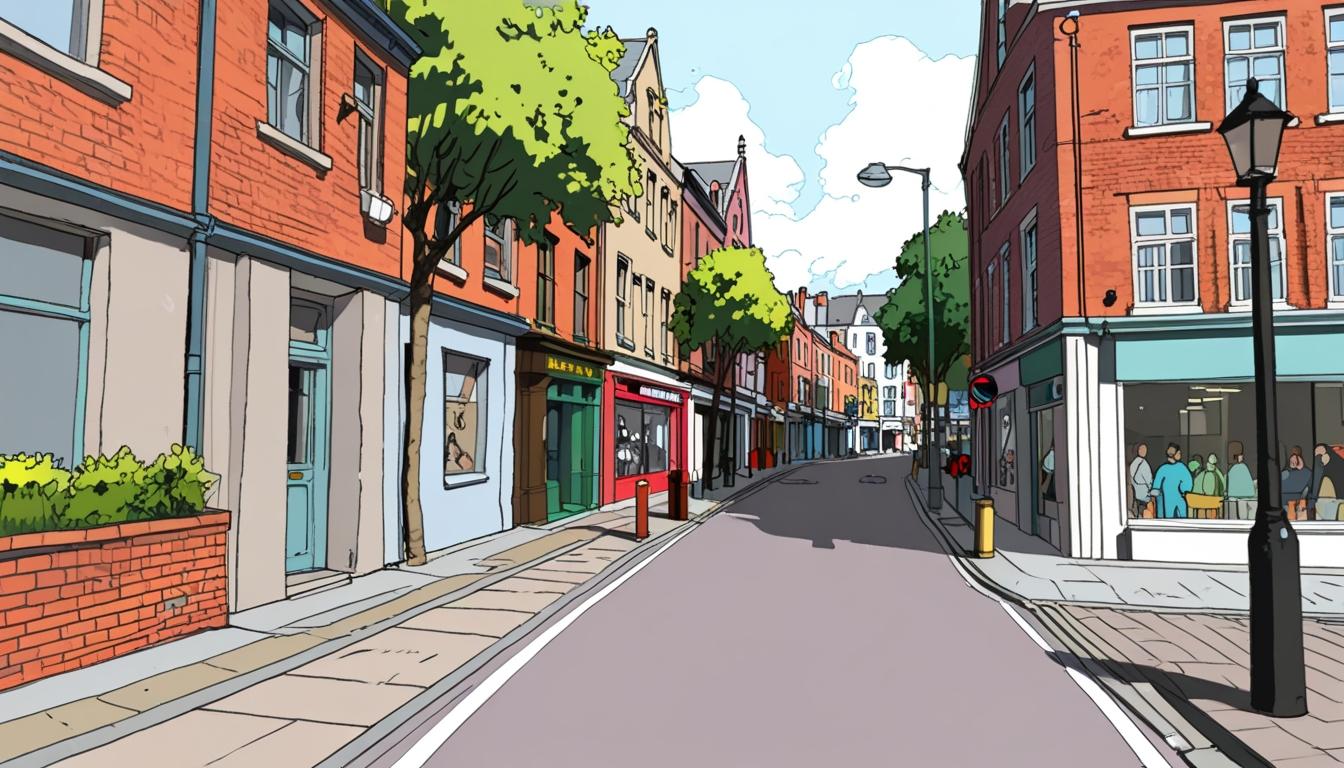Belfast’s Hill Street, a quaint cobbled thoroughfare barely more extensive than the brief walk from Dublin's General Post Office to O’Connell Bridge, has become the unlikely focus of criticism aimed at Sinn Féin’s governance. In a recent commentary, Sam McBride argues that the party’s continuous inability to implement straightforward traffic measures reveals a troubling ineptitude at the senior levels of its administration. With a whopping budget of £19 billion, the party's claim that austerity is hindering efforts to install a few bollards is met with incredulity.
For several years, there has been near-unanimous community agreement that Hill Street should be pedestrianised to enhance safety and accessibility. However, local authorities have found themselves mired in a protracted debate, struggling to reach consensus amid divided opinions from residents and businesses alike. While many advocate for closing the street to traffic—a move seen as pivotal for local urban development—objections related to accessibility and potential economic impact have complicated the discussion.
Sinn Féin’s official response regarding the proposed traffic closure reflects a broader tension in urban planning. Rather than presenting a decisive strategy, the party has cited budget constraints as a stumbling block. This stance has raised eyebrows, especially given the substantial funds reportedly at its disposal. Observers are left questioning whether financial limitations are genuinely the issue, or if they serve as a convenient excuse for a lack of decisive action.
The fate of Hill Street is emblematic of the challenges faced by Sinn Féin in navigating urban planning and governance. As frustrations mount, the party's critics argue that its handling of the matter signifies deeper issues within its political framework. The inability to transform consensus into action could have long-term implications, not just for Hill Street but for the party’s overall credibility as a governance entity.
Local business owners and residents have expressed mixed feelings about the proposed changes. While some see pedestrianisation as a means to rejuvenate the area and stimulate local commerce, others fear that limiting vehicle access could deter customers. This conflicting sentiment has added layers of complexity to the debate, indicating that any resolution will need to balance economic concerns with community wellbeing.
Ultimately, Hill Street stands at a crossroads—both figuratively and literally. The ongoing impasse serves as a microcosm of Sinn Féin’s struggles with governance in Northern Ireland, raising pressing questions about the party's capacity to address urban challenges effectively. As the dialogue continues, both supporters and dissenters will be watching closely to see if Sinn Féin can rise to the occasion and turn the rising tide of criticism into an opportunity for meaningful change.
Reference Map
- Paragraph 1 - Source 1, Source 2
- Paragraph 2 - Source 3
- Paragraph 3 - Source 4
- Paragraph 4 - Source 7
- Paragraph 5 - Source 5
- Paragraph 6 - Source 6
Source: Noah Wire Services
